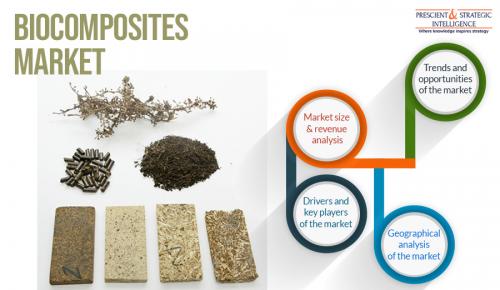Increasing Lightweight Vehicle Adoption Augmenting Biocomposite Production

Biocomposites refer to structural materials that are created from renewable resources. After their successful use, these materials biodegrade in an anaerobic environment to produce a feedstock or fuel that is sustainable and degradable. The disposal of these composites is quite easy, and it causes no harm to the environment. Due to the high durability of these substances, they are majorly used to increase the shelf-life of products. These composites are made of materials that are used for multiple tissue engineering and restorative applications owing to their superior mechanical properties, biodegradability, and biocompatibility.
These composites are being increasingly used in the automobile industry as they offer huge energy and cost savings for automakers. Moreover, the low weight of biocomposites also makes them ideal for the automotive industry. With the increasing adoption of lightweight vehicles owing to their energy efficiency, the biocomposites market will advance at a CAGR of 12.8% during 2018–2023. The market stood at $4,167.2 million in 2017, and it is projected to reach $8,473.4 million by 2023. Additionally, the usage of bio-based composites also reduces the dependence of automakers on non-renewable, petroleum-based polymeric plastics.
In addition to NFCs, automobile manufacturers are also using wood–plastic composites (WPC) in headliners, spare wheels, rear shelves and trims for trunks, seat bases, and interior trims for doors. The rising usage of biocomposites in vehicle production is in keeping with the ambitious weight reduction plans of European and North American automotive original equipment manufacturers (OEMs). These plans are themselves in response to the stringent environmental regulations of the federal and state governments and international organizations.
According to P&S Intelligence, the Asia-Pacific (APAC) region dominated the biocomposites market in the past due to the escalating adoption of lightweight materials in the automotive and aerospace industries, spurring demand for flame-retardant and electricity-resistant materials in the electrical and electronic sector, and accelerating usage of chemical- and corrosion- resistant materials in the pipe and tank and construction industries. Moreover, the region is also expected to adopt bio-based components at the highest rate in the coming years.
Thus, the growing consumption of lightweight and biodegradable composites in automotive and military aircraft production will augment the usage of biocomposites in the foreseeable years.
Advertise on APSense
This advertising space is available.
Post Your Ad Here
Post Your Ad Here
Comments